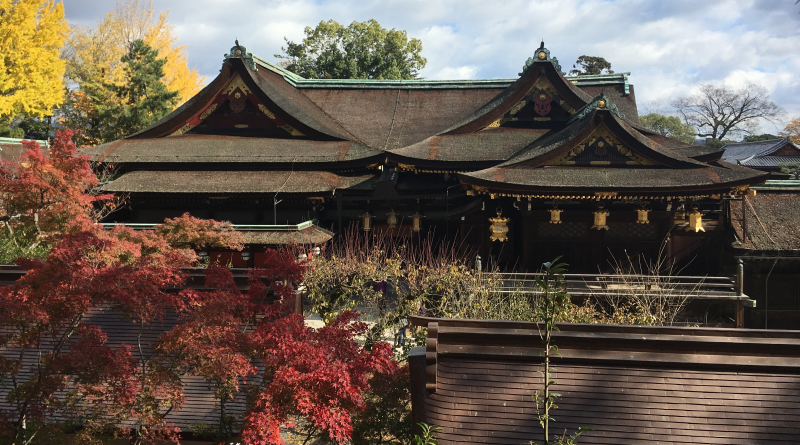
Kyoto’s Kitano Tenmangu Shrine and the God of Study
One of the most popular gods in Japan is the god of study and knowledge, Sugawara no Michizane, or Tenjin-san. During exam season every January through February, scores of Japanese school students visit his Tenmangu shrines, to beseech Tenjin-san for good marks on their university or high school exams. Though there are many Tenmangu shrines all over Japan, two are the most prominent: Dazaifu Tenmangu in Fukuoka, and Kitano Tenmangu [北野天満宮] in Kyoto.
A Brief History of Kitano Tenmangu
Tenmangu shrines, including Kitano Tenmangu, used to be built to calm the spirit of the Heian Period politician and scholar, Sugawara no Michizane [菅原道真].
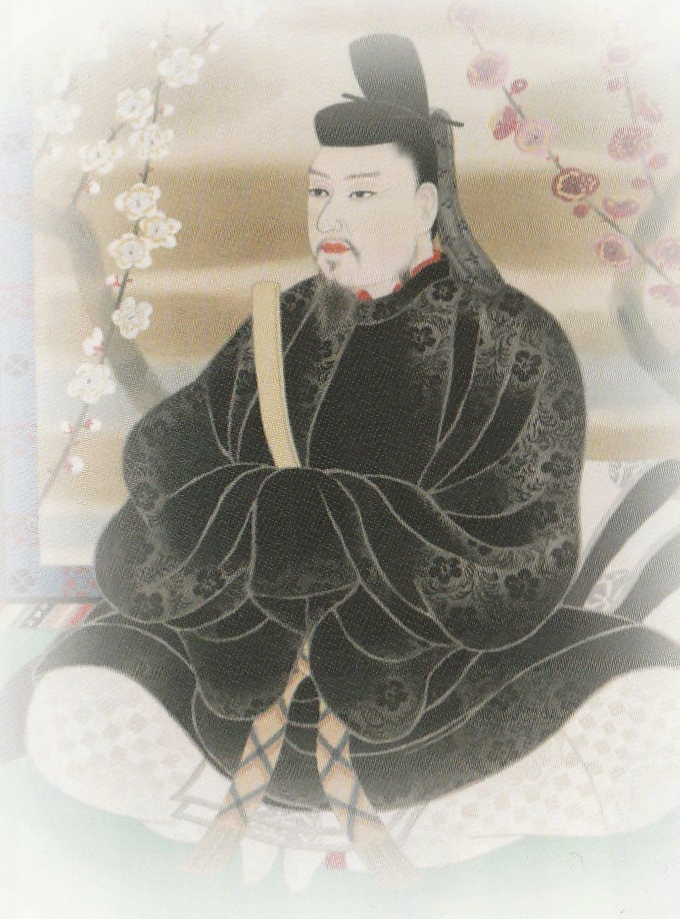
Some years earlier, the extremely powerful and influential Fujiwara clan, specifically Fujiwara no Tokihira, lied to the Emperor Daigo about a conspiracy by his Minister of the Right, Sugawara no Michizane. This resulted in Michizane’s banishment to Daizaifu in 901. This was a huge personal blow of Michizane, who deeply loved Kyoto.
Following his death in Dazaifu in 903, a strain of terrible events took place in Kyoto. Many of Michizane’s opponents suddenly died and a number of disasters befell Kyoto. One of the most terrible catastrophes was when lightening struck the Imperial court building. Needless to say, many people died instantly and in front of the Emperor no less! This caused so much upset that the Imperial Court pardoned and even promoted him! However, bad things continued to happen.
Construction of Kitano Tenmangu
Finally in 947, plans were drawn up to build Kitano Tenmangu in an attempt to sooth Michizaen’s anger. Tokihira’s nephew also donated a considerable sum to the construction of Kitano Tenmangu.
By the Edo Period, Michizane had gradually become a god of study. This is probably due to the fact the in life Michizane was a very intelligent man. Today, Kitano Tenmangu is definitely one of the places students go before and during entrance exam season.
Getting to Kitano Tenmangu
Kitano Tenmangu shrine is a very famous tourist spot in Kyoto, so there are plenty ways to access to the shrine. The closest train station is Kitano Hakubaicho Station and it is possible to walk to Kitano Tenmangu from there (about 10 minute).
[mappress mapid=”63″ width= “95%”]Shrine Grounds

The koma inu of Kitano Tenmangu are some of the biggest in Kyoto! This is one of the most photographed places in the shrine.
Romon Gate [楼門]
Before long you will come to a large gate known as a romon, literally meaning tower gate. This gate is interesting because instead of leading directly back to the shrines haiden, it leads to a smaller shrine within Kitano Tenmangu, which is most likely the original shrine that stood here before Kitano Tenmangu’s construction. The gate itself was built at the same time as Sankomon in 1607.

Sankomon Gate [三光門]
Sanko means three lights, referring to the sun, moon, and stars. There are paintings of the sun and the moon, but oddly there are no stars. This is one of the mysteries of the shrine.

Honden
Once you pass through Sankomon, you will see the haiden. The main part of the shine, the honden, is not visible. The inside of the honden is thought to be too sacred for anyone to simply look in. In some shrines, even the priests are not allowed inside the honden. However if you are very curious, you can get little glimpses of the honden as you walk around the haiden.

The haiden also features the only portrayal of a cow in a standing position in the entire shrine.


Architecture
The honden of Kitano Tenmangu has a very unique structure. One interesting facet is that the honden and the haiden are connected by a short path called ishi no ma [石の間]. Additionally there are two small rooms, called raku no ma [楽の間] on either side of the haiden. All of these structures are under the same roof, making the honden of Kitano Tenmangu’s much more complicated and elaborate than most other shrines.

Ura no Yashiro [裏の社]
Once you pray at the front of the haiden, don’t forget to pray at the back of the haden too! Back of the haiden is called Ura no Yashiro and enshrines Michizane’s ancestors.
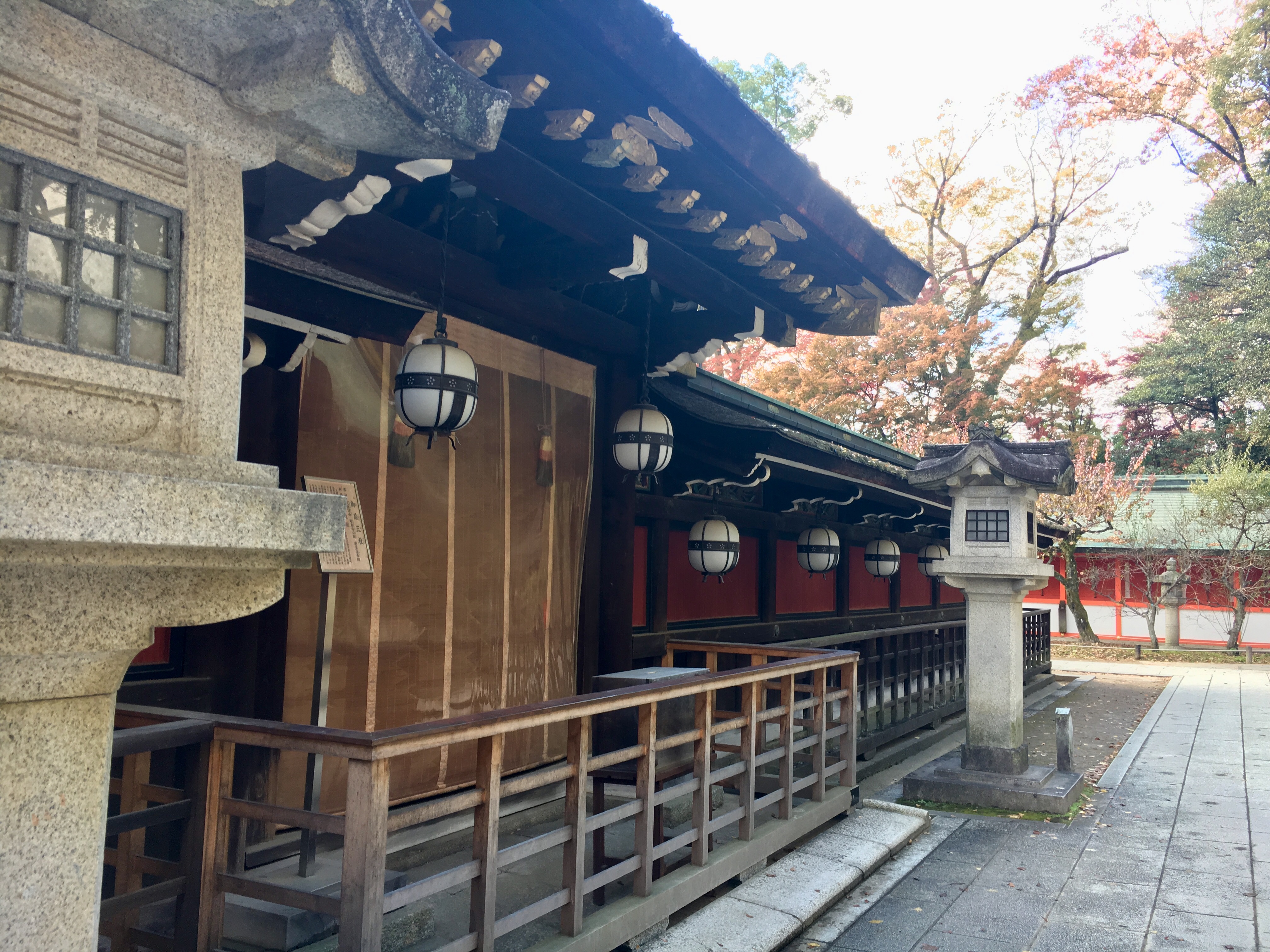
Points of Interest
Cows
Throughout Kitano Tenmangu are many cow statues, primarily because Michizaen loved cows. However, if you look closely, each statue is a little bit different. Some of them seem angry with bright red eyes, and some have very gentle, docile expression. These cows are nade ushi [撫牛], or petting cows. If you have a specific ailment these cows might be able to help you out! Just rub the part of your body that you want fixed and then rub the cow in the same spot and you will be healed.

Tomo Uji-sha [伴氏社]
Back near the entrance just before the Romon Gate is Tomo Uji-sha, a small shrine for Michizane’s mother. Though not many people pay attention to this shrine, it has one of the most famous torii in Kyoto!

Typically, the center of the torii, is usually where the name plate of the shrine goes. If the name plate is not present, then a stone brick takes its place.

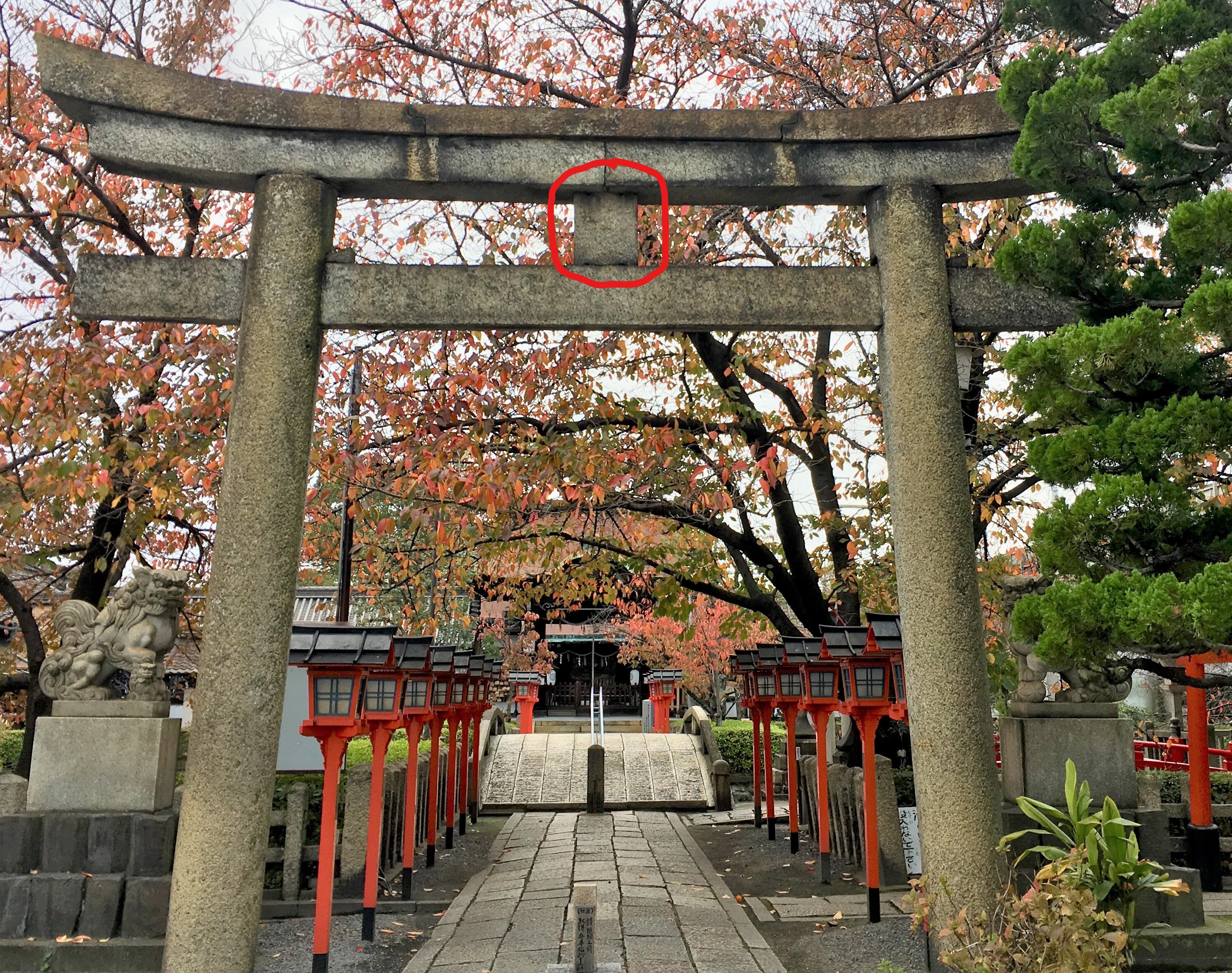
However, this brick should not go through the horizontal stone above it. What makes Tomo Uji-sha special is that this rule was not applied, meaning this torii is extremely rare.
Monument of Grand Kitano Tea Ceremony
The Grand Kitano Tea Ceremony was conducted by Hideyoshi in 1587. Hideyoshi invited anyone interested in tea could attend— even commoners. Hideyoshi’s tea master, Sen no Rikyu, also attended this ceremony. However, after the tea ceremony their relationship soured very badly. Hideyoshi even ordered Rikyu to commit a suicide!

Historians assume that part of the reason their relationship went south was the golden tea room Hideyoshi brought in to Kitano Tenmangu. This golden tea would would have greatly offended Rikyu because it contradicted his teachings of tea ceremony.
Chogoro Mochi
One of Kitano Tenmagu’s most famous souvenir is definitely Chogoro Mochi [長五郎餅]. Chogoro Mochi dates back to Hideyoshi’s grand tea ceremony. Hideyoshi loved these little rice cakes and called them Chogoro Mochi because the store owner’s name was Chogoro. Ever since then, Chogoro Mochi became popular and was even a favorite of the imperial family. You should definitely try them when you come to Kitano Tenmangu.
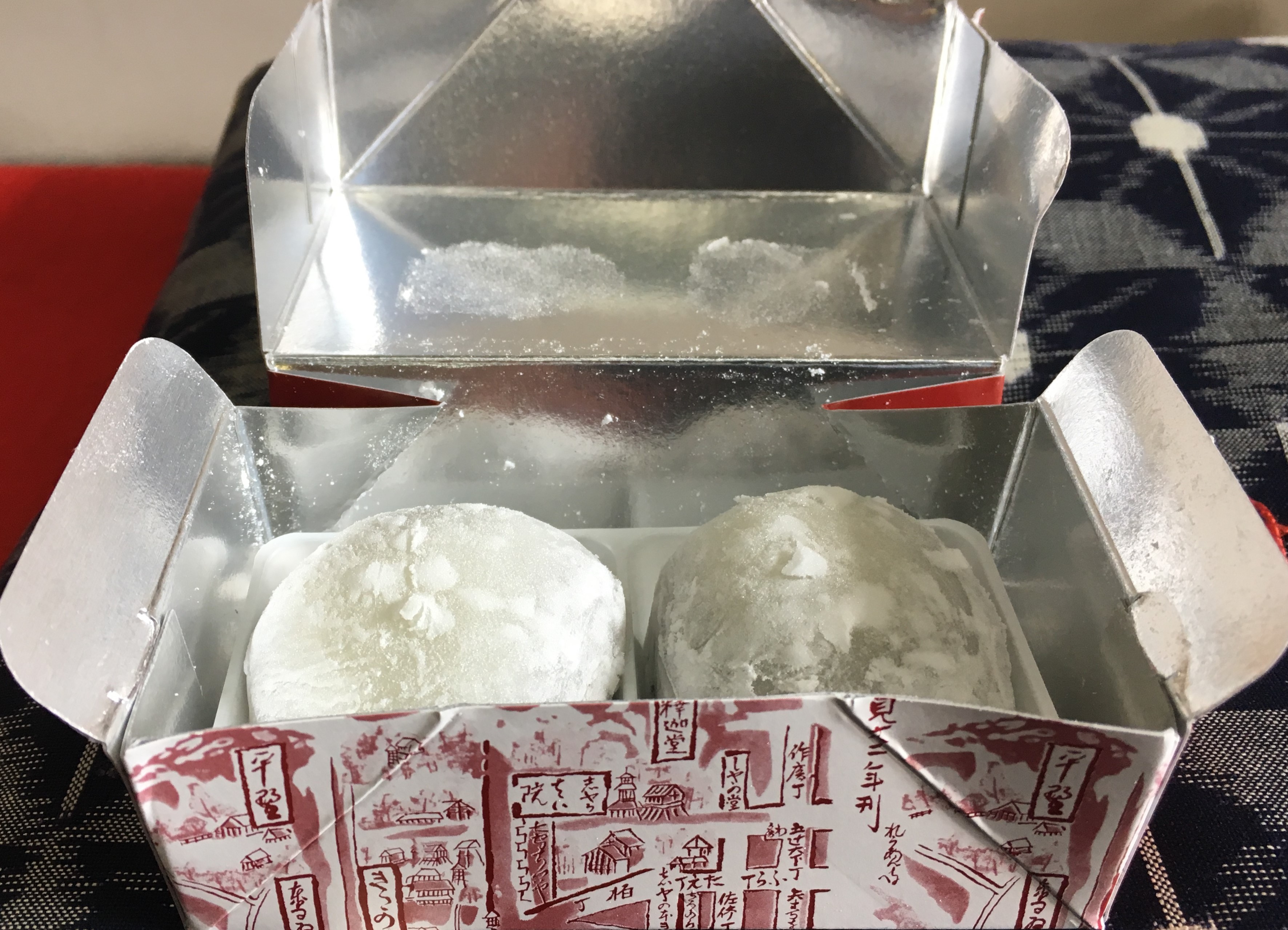
There is a Chogoro Mochi booth in the Kitano Tenmangu near the East Gate, but it is only runs on weekends, or during major festivals.
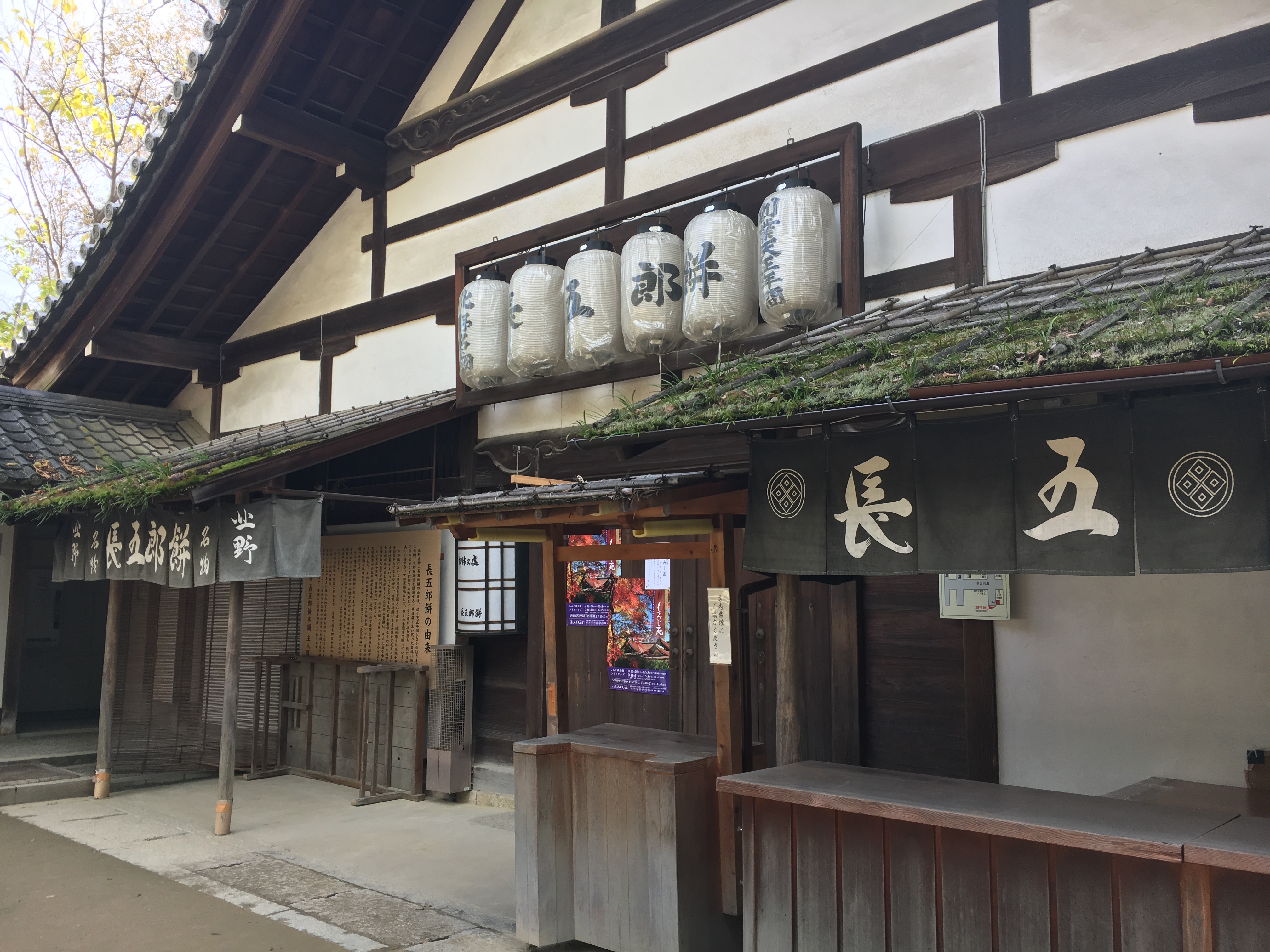
The main Chogoro Mochi shop is 5 minutes away from the East Gate of Kitano Tenmnagu. You can also visit their website here (Japanese only).
[mappress mapid=”64″ width= “95%”]
Kitano Tenmangu
| Address | Bakurocho, Kamigyo Ward, Kyoto, Kyoto Prefecture 602-8386 |
| Website | http://kitanotenmangu.or.jp/top_en.php |
| Hours of Operation | Open Daily: 9:00-17:00 |
| Admission | Free |
This may be a personal bias but I adore Tenmangu shrines! I think they are always some of the most beautiful and interesting. Filled with interesting symbolism and beautiful plum trees, you will surely discover something new!
Coming next time,
An autumn special! Kitano Tenmangu’s Momiji Garden!
The adventure continues…
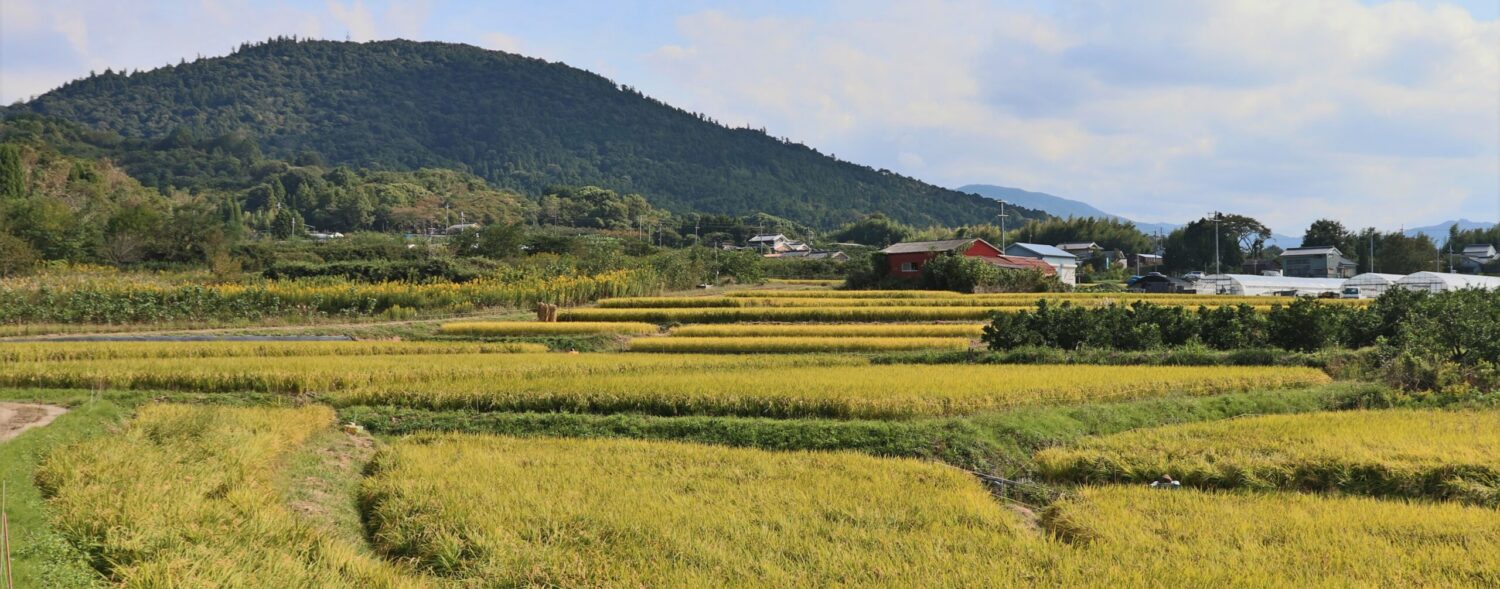
Leave a Reply